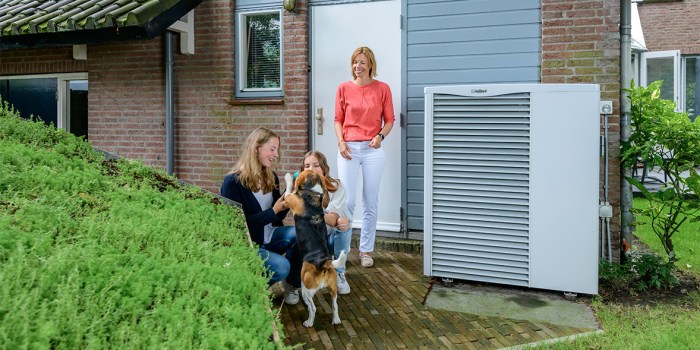A heat pump with supplementary heat is ____. – A heat pump with supplementary heat is an innovative and efficient heating solution that combines the advantages of both heat pumps and traditional heating systems. This comprehensive guide delves into the intricacies of heat pumps with supplementary heat, exploring their types, design considerations, installation and maintenance, energy efficiency, and environmental impact.
Whether you’re considering upgrading your existing heating system or building a new home, this guide will provide you with the knowledge and insights necessary to make informed decisions about heat pumps with supplementary heat. Discover how these systems can enhance your comfort, reduce your energy consumption, and contribute to a more sustainable future.
Heat Pumps with Supplementary Heat

A heat pump with supplementary heat is a type of heating system that combines a heat pump with an additional heat source, such as a furnace or electric resistance heater. This combination allows the heat pump to provide efficient heating in a wide range of climates, while the supplementary heat source provides backup heat when needed.
Types of Heat Pumps with Supplementary Heat
There are several types of heat pumps with supplementary heat, each with its own unique features and benefits:
- Air-source heat pumpsare the most common type of heat pump. They work by extracting heat from the outside air and transferring it to the inside of the home. Air-source heat pumps can be used in most climates, but they are most efficient in mild climates.
- Geothermal heat pumpsextract heat from the ground. Geothermal heat pumps are more expensive to install than air-source heat pumps, but they are more efficient and can provide heating and cooling all year round.
- Water-source heat pumpsextract heat from a body of water, such as a lake or river. Water-source heat pumps are the most efficient type of heat pump, but they are only suitable for homes that are located near a body of water.
Design Considerations for Heat Pumps with Supplementary Heat
When designing a heat pump system with supplementary heat, there are several factors to consider:
- The size of the home. The size of the home will determine the size of the heat pump and supplementary heat source that is needed.
- The insulation levels of the home. The insulation levels of the home will affect the efficiency of the heat pump. A well-insulated home will require a smaller heat pump than a poorly insulated home.
- The climate. The climate will determine the type of heat pump and supplementary heat source that is needed. In a mild climate, an air-source heat pump may be sufficient. In a cold climate, a geothermal heat pump or a water-source heat pump may be necessary.
Installation and Maintenance of Heat Pumps with Supplementary Heat
Heat pumps with supplementary heat are relatively easy to install. However, it is important to have the system installed by a qualified technician. Once the system is installed, it is important to have it regularly maintained. Regular maintenance will help to ensure that the system is operating efficiently and safely.
Energy Efficiency and Cost Savings of Heat Pumps with Supplementary Heat
Heat pumps with supplementary heat can be very energy efficient. In fact, they can be up to 50% more efficient than traditional heating systems. This can lead to significant cost savings on energy bills.
Environmental Impact of Heat Pumps with Supplementary Heat, A heat pump with supplementary heat is ____.
Heat pumps with supplementary heat can have a positive impact on the environment. They can help to reduce greenhouse gas emissions and can be used with renewable energy sources, such as solar and wind power.
Helpful Answers: A Heat Pump With Supplementary Heat Is ____.
What are the advantages of a heat pump with supplementary heat?
Heat pumps with supplementary heat offer several advantages, including higher efficiency, lower energy consumption, reduced greenhouse gas emissions, and the ability to provide both heating and cooling.
How does a heat pump with supplementary heat work?
A heat pump with supplementary heat operates by extracting heat from the outside air or ground and transferring it to the inside of your home. When the outside temperature drops below a certain point, the supplementary heat source, such as an electric resistance heater or gas furnace, kicks in to provide additional warmth.
What are the different types of heat pumps with supplementary heat?
There are two main types of heat pumps with supplementary heat: air-source heat pumps and ground-source heat pumps. Air-source heat pumps extract heat from the outside air, while ground-source heat pumps extract heat from the ground.

